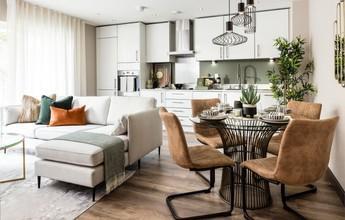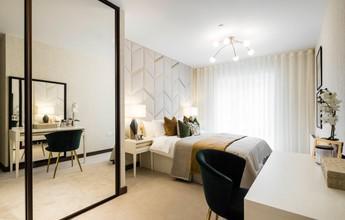
You cannot miss the media coverage of the Government’s green agenda of net zero carbon emissions by 2050 but what does it mean to home buyers?
If you own a home it is about improving what you have with greener upgrades that do not waste so much energy. Better overall insulation is top of the agenda to make older homes more economically efficient. The process of improvement is termed “Retro Fitting”. Retro fitting can cost the average home owner £6,155.
The UK’s aging housing stock contributes 20% of the nation’s CO2 emissions. Halifax research shows 15 million homes have an Energy Performance Rating (EPC) of below A-C. EPC is a rating scheme which bands properties between A and G based on energy performance in a property. A current Government proposal is for all owner occupiers to be A-C by 2035 or their homes could lose value and become harder to sell.
From 2021 97% of new homes have been built to the higher standard. Weston Homes has two of its own highly specialised factories devoted to constructing energy saving components for its new homes. The Home builders Federation have demonstrated a saving of £435 per year on new build energy bills.
Ofgem’s chief executive, Jonathan Brearley, told parliament in May that due to the energy cap increase in October average household energy bills on older homes would be pushed to £2,800 per year, a 40% increase. New Builds running costs were 50 per cent lower – a significant monthly saving.
When a bank or building society assesses your affordability, they use the data on the average cost of living per property, provided by the office of national statistics (ONS), to budget plan how much to lend you.
New Build got a boost last week with Leeds Building Society stating they would lend more to borrowers buying homes with running costs rated A-C.


The banks and building societies are doing their bit to contribute to supporting the Green Agenda by offering Green Mortgages. The benefits on offer vary from a discounted rate to cashbacks or free valuation. As an example the typical purchase price for a first-time buyer is £281,900 and the average deposit is 10% so for a mortgage amount of £253,710. Barclays Green offering for a 2 year fixed rate is currently 3.54%* or for non green (those rated D and below) a 2 year fixed is 3.84%*. In terms of cost over a 30-year term, initial prices would be £1145 per month compared with £1188 which is a saving over the 2 year fixed period of £1032.
**Rates valid and correct at time of writing 25/07/2022.
Rental properties are looking even less attractive within the Green Home Initiative as the Government plan to bring in new legislation to ensure all new tenancies from 2025 are on A-C rated homes. All existing tenancies will have to be improved by 2028.
This has come as a shock to landlords who are expected to fund the cost of improvements – on average £7646 per private property . The market has already seen rents increase 11% since Q1 2021 (Zoopla May 2022) and retro fittings costs will increase rents further.
By buying a new home you benefit from improved affordability, cheaper interest rates, reduced running costs and brand new fixtures and fittings which are less likely to break down.